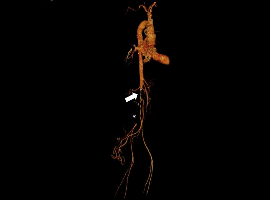João Paulo Rocha, Neuza Soares and Susana Ferreira*
Serviço de Medicina Interna, Centro Hospitalar Universitário São João, Porto, Portugal
*Corresponding author: Susana Ferreira, Serviço de Medicina Interna, Centro Hospitalar São João, Alameda Prof. Hernâni Monteiro, 4200-319 Porto, Portugal, E-mail: sumaia2@gmail.com
Received: February 14, 2021; Accepted: February 21, 2021; Published: March 26, 2021
Citation: João Paulo Rocha, Neuza Soares, Susana Ferreira, et al. Mid-aortic Dysplastic Syndrome. Clin Image Case Rep J. 2021; 3(3): 150.


